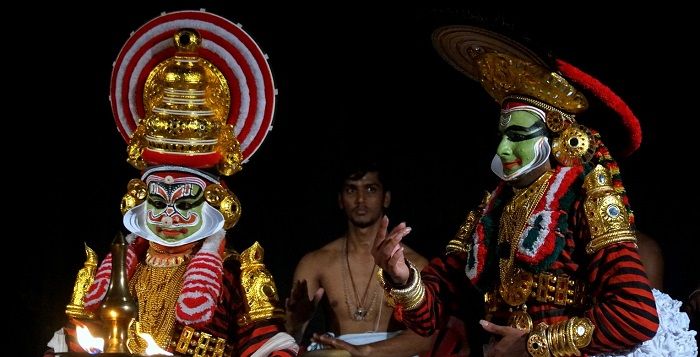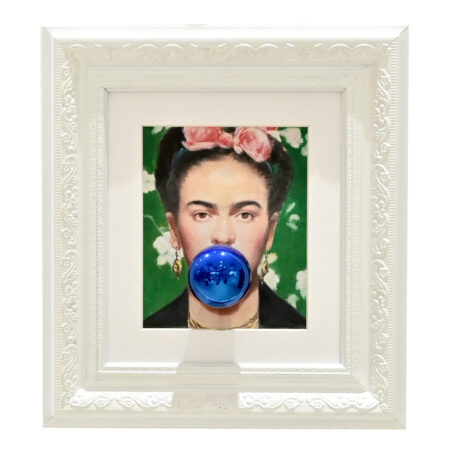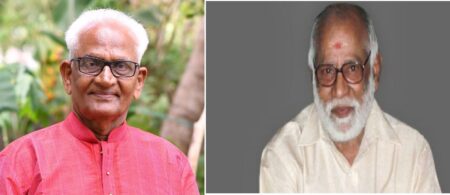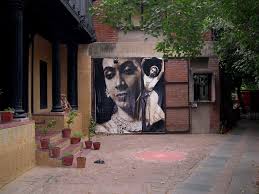Senior and young exponents of Koodiyattam and Nangiarkoothu suggest virtual shows and online classes as means to retain the spirit of the two ancient theatres. Highlights from a recent panel discussion.
Koodiyattam performers should make better use of the Covid-induced lull by learning deeper and wider about the aesthetics of the ancient Sanskrit theatre, according to practitioners from the old and new generations. The artistes can try to retain their skills by presenting virtual shows on and off till normalcy is restored after the pandemic, they noted in a discussion.
Also, online teaching of Koodiyattam as well as its off-shoot, Nangiarkoothu, must continue till an abatement in the spread of the coronavirus, the speakers said. There is no place for any fear over such sessions catering to unintended students, who take undue advantage of it, they added.
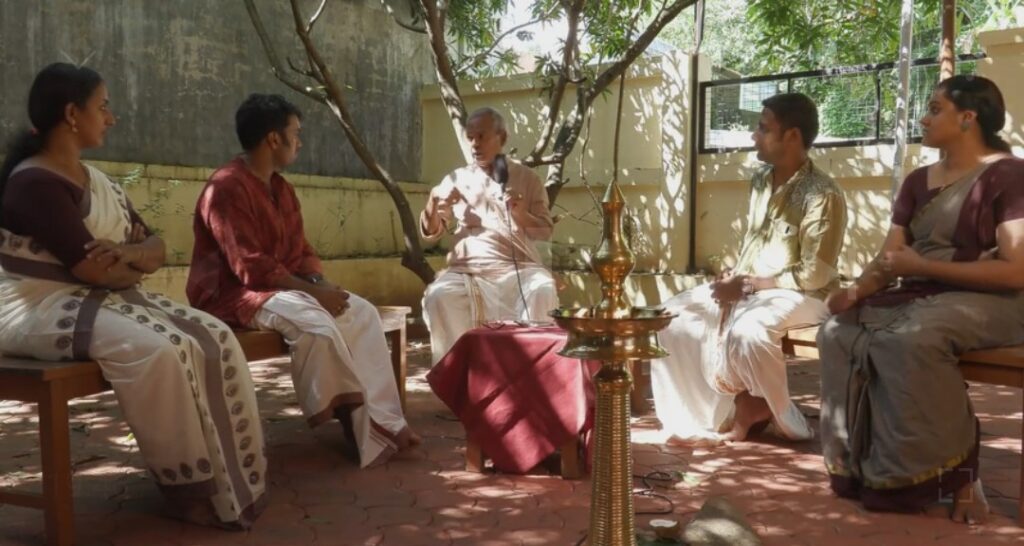
The five-member panel, led by Koodiyattam and Chakyarkoothu exponent Kalamandalam Rama Chakyar, aired their views at a get-together organised by Natya Sangraham, a nascent cultural platform in Kerala. Across four weekly ‘Samvaadam’ sessions this month at the organisation’s base near Thrissur, the artistes debated on the changing tastes of the audiences and ways to ensure that Koodiyattam doesn’t lose its essential aesthetics while seeking a broader viewership.
“In any case, neither Koodiyattam nor Nangiarkoothu can become popular in the strict sense of the word,” said 70-year-old Rama Chakyar. “We can only woo potential enjoyers. They aren’t very large in number but are crucial to the future of both the theatres.”
Young Jishnu Prathap, who moderated the sessions, agreed with his guru. “After all, any performing art is dead without spectators,” he pointed out. “Koodiyattam has faced several crises down the centuries. The one today over Covid-19 is just the latest. We will overcome this as well. For, this theatre has proven its capability to appealing to changing generations.”
Small audience can be inspiring too
Kalamandalam Krishnendu, while agreeing to the efficacy of online classes, said they are “no substitute” to the age-old teaching methods. “We carried out online classes this academic year, till recently, in Kalamandalam. It did work well too, though we initially found it tough to tune to the tech-driven environment,” she said.
Taking a cue from the observation, Kalamandalam Prasanthi said facing the camera instead of real-time spectators posed a challenge for her virtual shows. “It was so at least in the beginning phase. But these are matters we must learn to adjust with changing situations. More so, when there is a bigger crisis,” she added.
Sangeeth Chakyar, 35, said the pandemic may have led to a massive slide in performance venues but the past ten months have sprung positivity too. “We get time not just to conceive new choreographies but brush up old lessons, some of which we had lost touch over time. It is an occasion to ruminate, and we shouldn’t miss it,” he noted. “The physical absence of a live audience can be a bit of a problem in the verbal Chakyarkoothu that calls for interaction with the spectators.”
Rama Chakyar, not completely concurring with the view, said Chakyarkoothu has had its profile in Akashvani studios too. “There, we don’t have an audience. Yet we have managed,” he said. “See, 1930s or so is often referred to as the golden period of Koodiyattam, going by the eminence of its maestros those days. Even in that case, a venue of great value, say Tripunithura (then the capital of Kochi kingdom), had a maximum of some 80 people watching. What inspired the performers was their immensely high levels of appreciation.”
Check on fast pace
A rise in pace of contemporary life shouldn’t percolate much into the ethos of Koodiyattam and Nangiarkoothu, the panelists said.
Rama Chakyar decried the trend of Chakyarkoothu artistes reaching venues just ahead of schedule, dressing up quickly, perform matter-of-factly and pocket their remuneration before rushing back in their motorbikes.
“Ours is a slow art. We shouldn’t lose that vibe to modern times,” he emphasised. “What’s more, we should discourage the trend of Koodiyattam becoming solo shows in a big way. Individual brilliance is all fine; welcome too. But as artistes of a unique form, we must all stand together instead of branching out in pursuit of selfish pleasure.”
Further, Chakyarkoothu shouldn’t deteriorate to a level that reminds the viewer of some slapstick comedy, the septuagenarian cautioned.
Jishnu revealed that Natya Sangraham founded in Oorakam chiefly comprises youngsters trained under Rama Chakyar. It also features performers, percussionists and art enthusiasts with an inclination to learn the spirit of Koodiyattam and Nangiarkoothu so as to reach out to audiences worldwide.
“We believe the onus of keeping alive the guru-shishya tradition rests with youngsters and buffs of these art-forms,” he said. “The idea is to provide interactive platforms — virtual and physical — for the presentations of new productions. It will enhance the appreciation capabilities of both viewers and theoreticians and help us collaborate with classical art-forms on interdisciplinary topics.”

